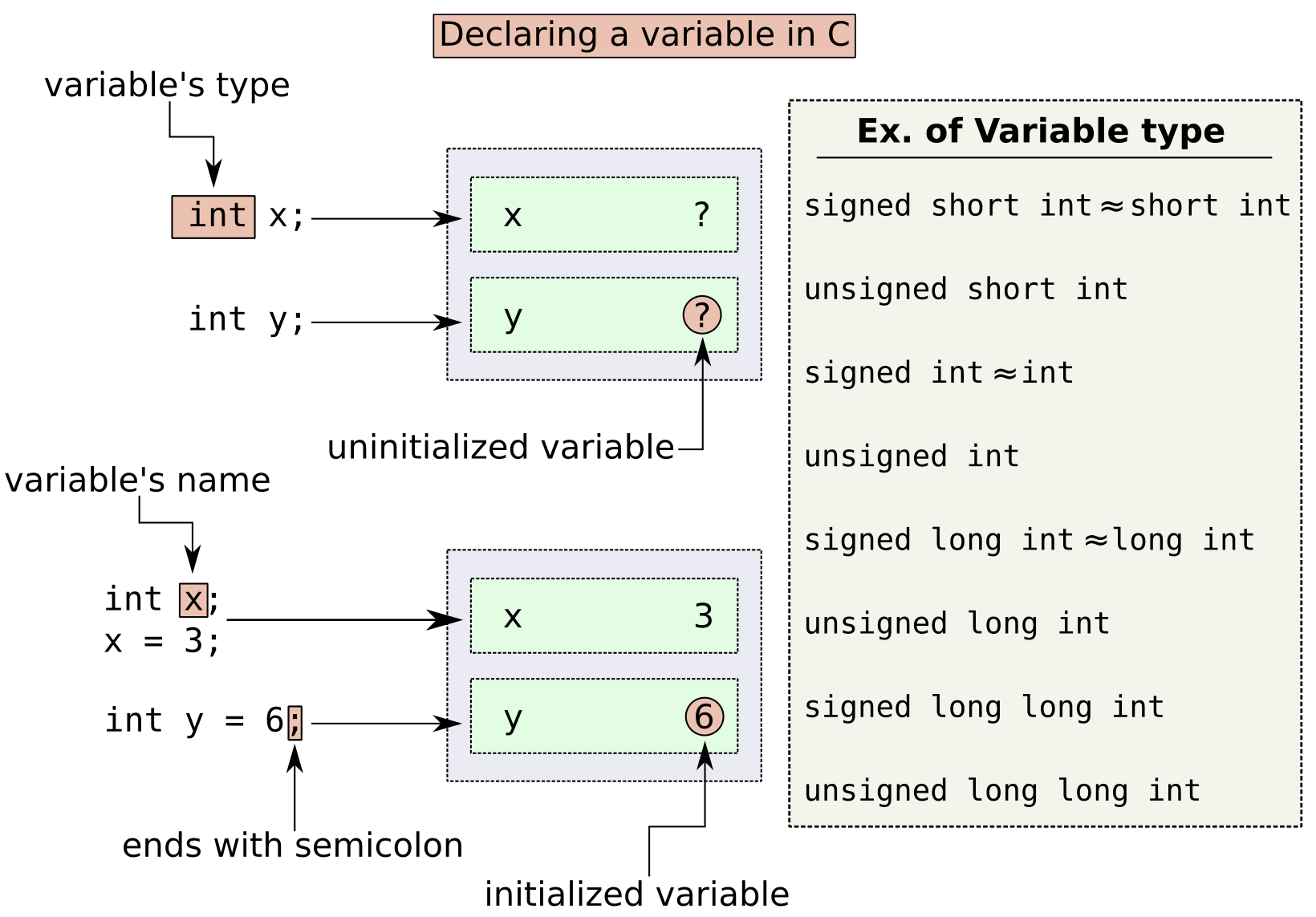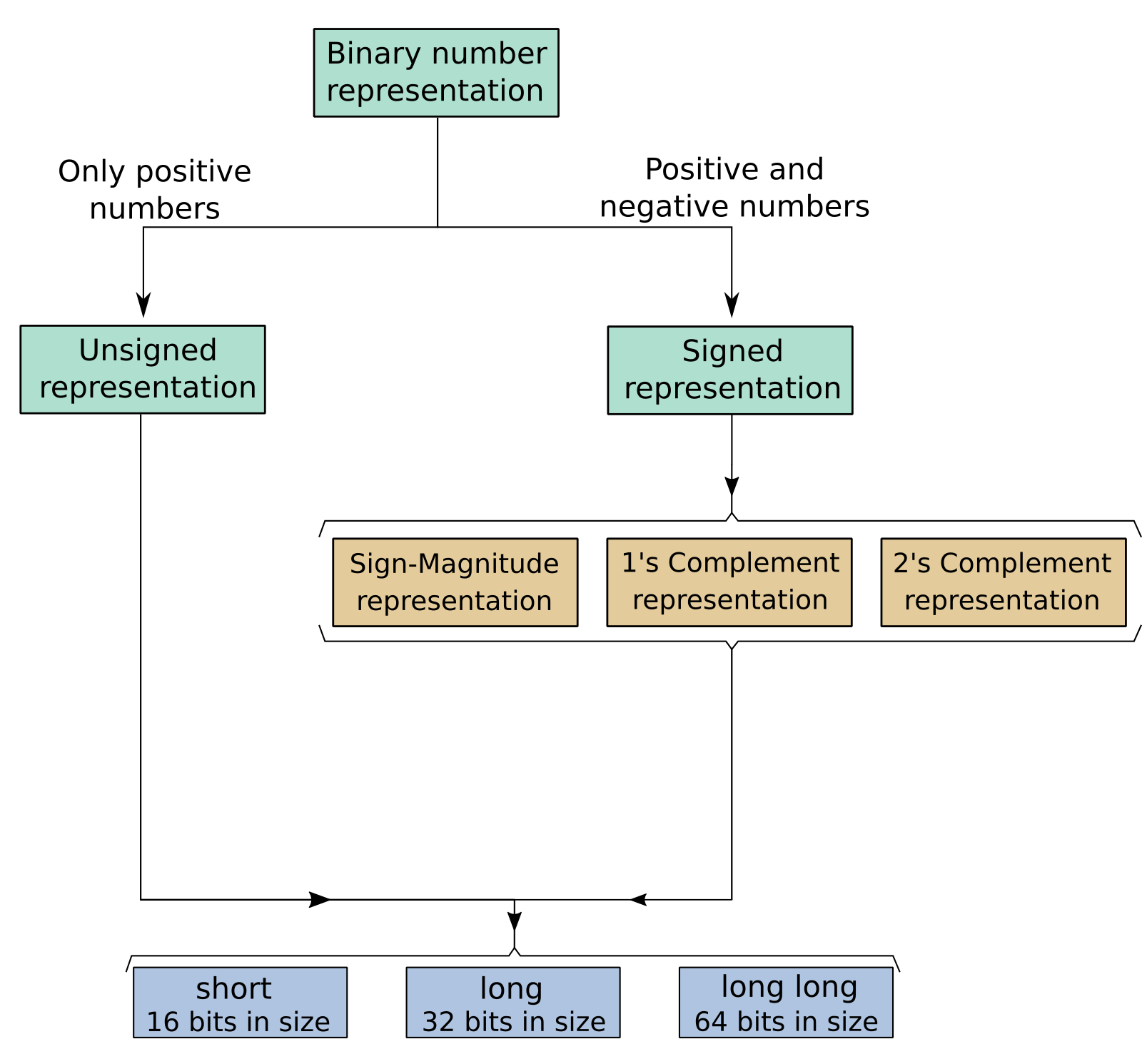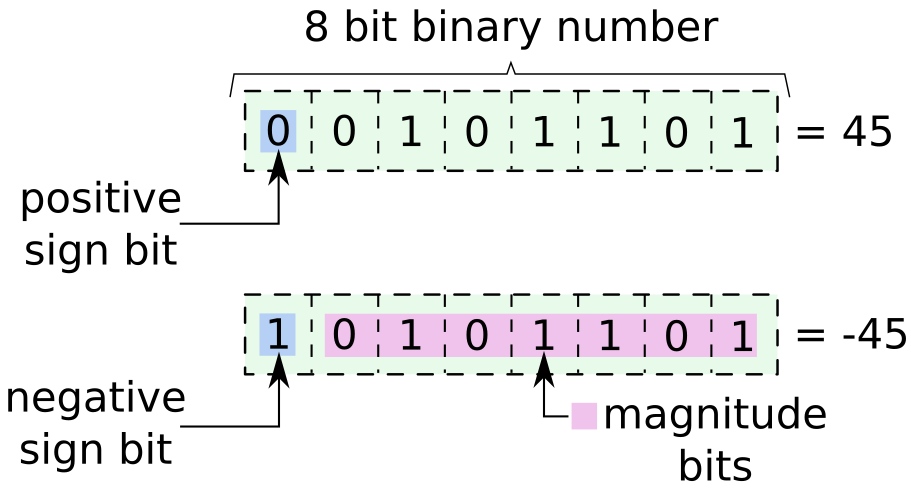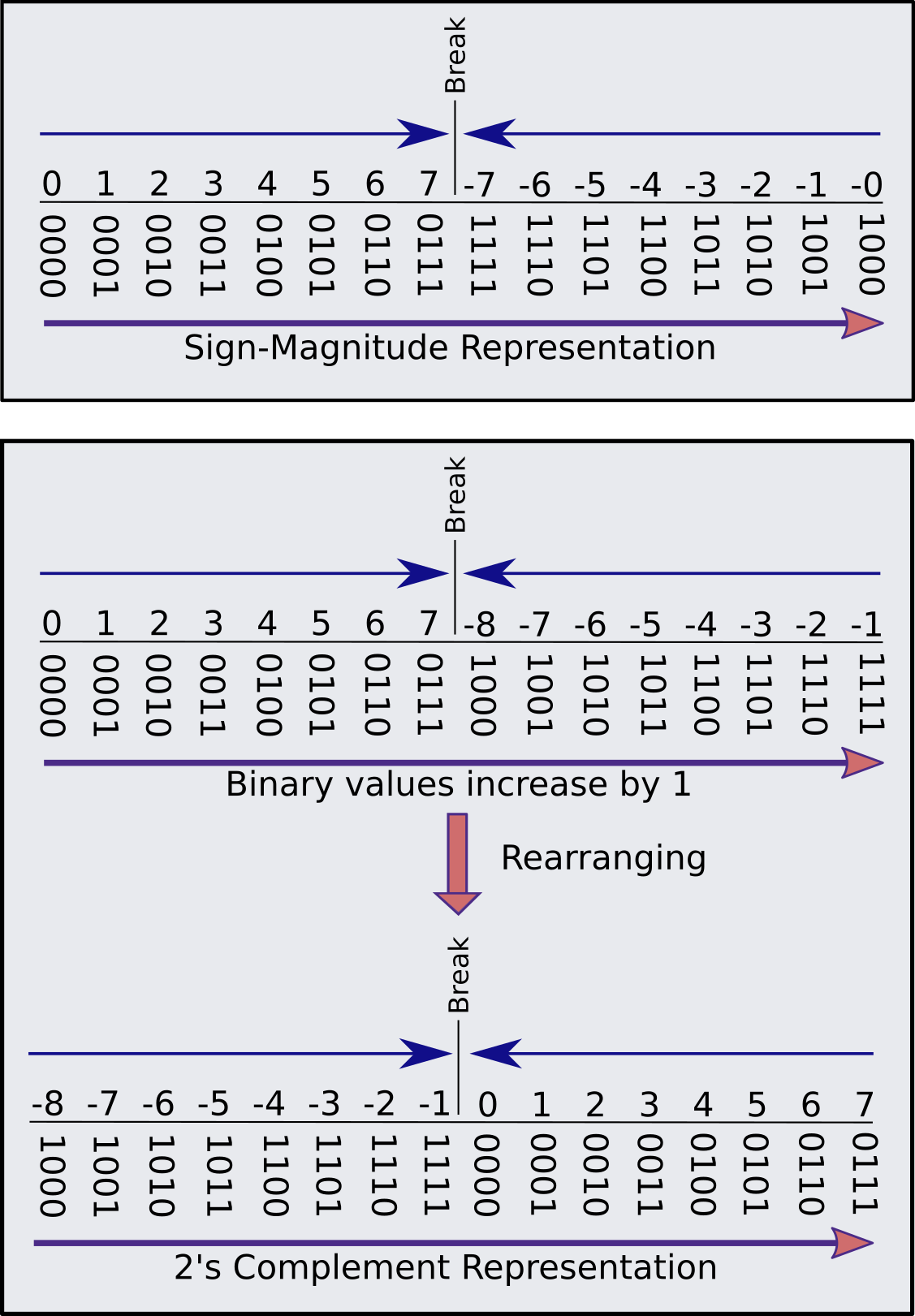Signed and Unsigned Binary Numbers
Introduction
When we think about writing a program in C, the first step is understand how variables should be assigned. There are several variable’s type in C, and here we are introducing the type int, which is used for integer data types. Basically, we can define a variable as an integer in two ways:

Declaring variables in C
Additionally, there are a large set of storage size-specific declarations for a integer, and here we will explain just an initial idea about it. Figure 2 showns the Integer representation of whole numbers or fixed-point numbers (fixed number of digits). Generally, computers use a fixed number of bits to represent them, where commonly used bit-lengths for integers are 8-bit, 16-bit (short), 32-bit (long) or 64-bit (long long). There are two representation schemes for integers called signed integer type (signed int) capable of containing the range of values from -32,767 to 32,767, and unsigned integer type (unsigned int) containing the range of values from 0 to 65,535 ($32767 \times 2+1$). Therefore, unsigned qualifier should be used when we are working with only positive values.

Integer Representation
Furthermore, there are three representation schemes for signed integers called Sign-Magnitude representation, 1’s Complement representation, and 2’s Complement representation. The 1’s and the 2’s complements of a binary number are important because they permit different representation for negative numbers. In all of these schemes, positive signed binary numbers starts with value 0 while negative ones starts with value 1 (Figure 3).

Signed binary numbers

Representation schemes of Sign-Magnitude Representation and 2's Complement Representation
Examples
Unsigned int
Supose we are interested in representing a sequence of number $x$ where $x \in \lbrace 0, 1, \ldots, 15\rbrace$. We can assign these numbers as unsigned numbers of 4 bits. Consequently, we have 4 zero bits associated to describe this numbers because our variable belongs to the interval $[0, 2^{4}−1] \in \mathcal{N}_{0}$.
| bits | 0000 | 0001 | 0010 | 0011 | 0100 | 0101 | 0110 | 0111 | 1000 | 1001 | 1010 | 1011 | 1100 | 1101 | 1110 | 1111 |
| x | 0 | 1 | 2 | 3 | 4 | 5 | 6 | 7 | 8 | 9 | 10 | 11 | 12 | 13 | 14 | 15 |
Signed int
Supose now we are interested in representing a sequence of number $y$ where $y \in \lbrace -7, -6, \ldots,6, 7\rbrace$. We have to assign them as signed numbers using 4 bits because 1 bit will be used for sign bit and 3 bits for the magnitude bits to describe $y \in \left[-|2^3-1|,2^3-1\right] \in \mathcal{Z}$.
| bits | 0111 | 0110 | 0101 | 0100 | 0011 | 0010 | 0001 | 0000 | 1000 | 1001 | 1010 | 1011 | 1100 | 1101 | 1110 | 1111 |
| y | 7 | 6 | 5 | 4 | 3 | 2 | 1 | 0 | -0 | -1 | -2 | -3 | -4 | -5 | -6 | -7 |
| bits | 1000 | 1001 | 1010 | 1011 | 1100 | 1101 | 1110 | 1111 | 0000 | 0001 | 0010 | 0011 | 0100 | 0101 | 0110 | 0111 |
| y | -8 | -7 | -6 | -5 | -4 | -3 | -2 | -1 | 0 | 1 | 2 | 3 | 4 | 5 | 6 | 7 |
References
Barnett R.; O’Cull L.; Cox, S. Embedded C Programming and the Microship PIC. Delmar Learning, ed. 1, 2004.
Cadenhead, R.; Liberty, J. Sams Teach Yoirself C++. Pearson Education, ed. 6, 2017.
C Data Types - https://en.wikipedia.org/wiki/C_data_types
Did you find this page helpful? Consider sharing it 🙌